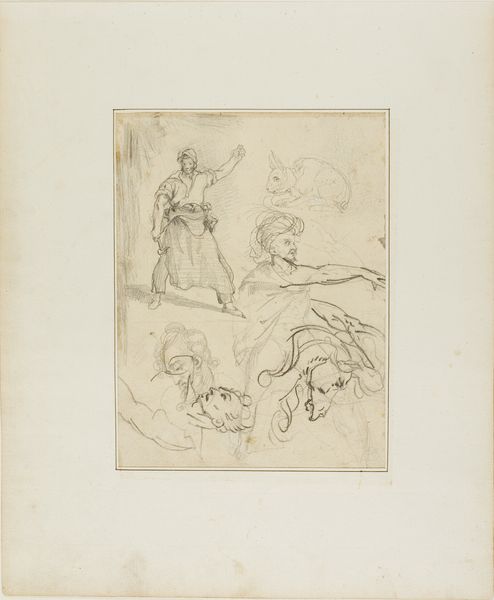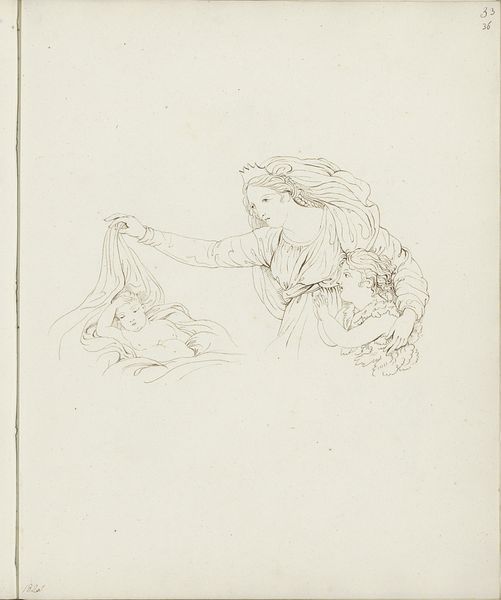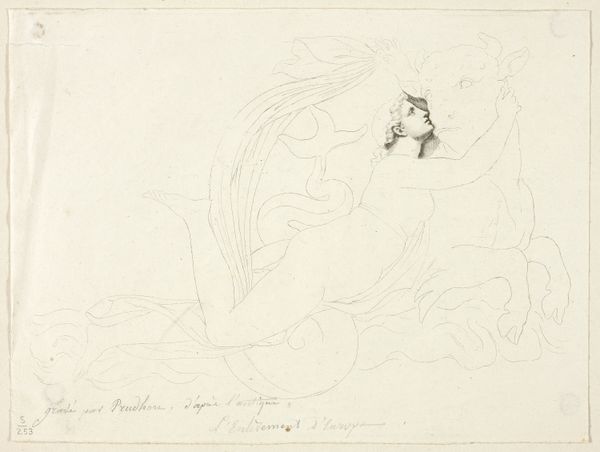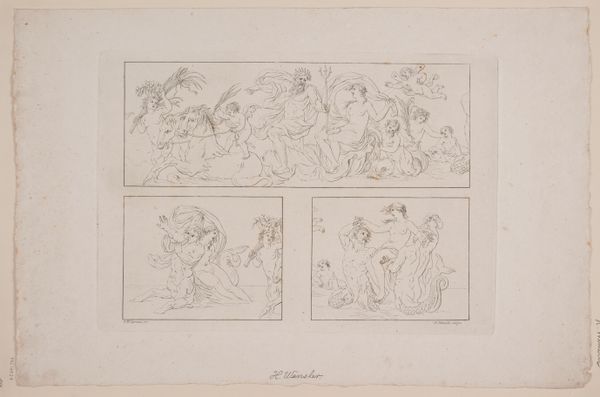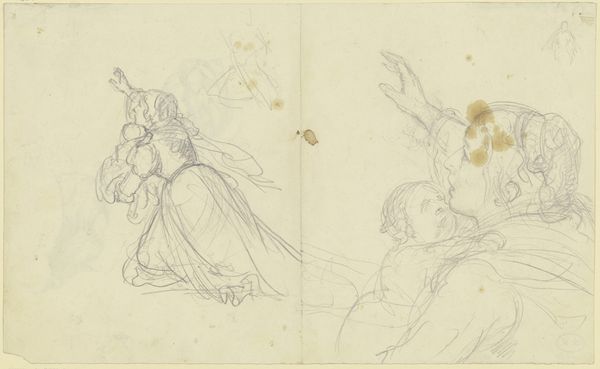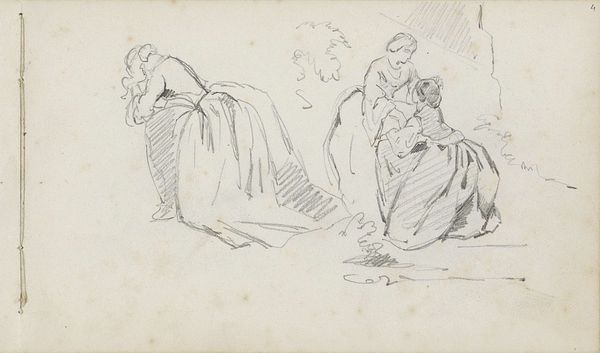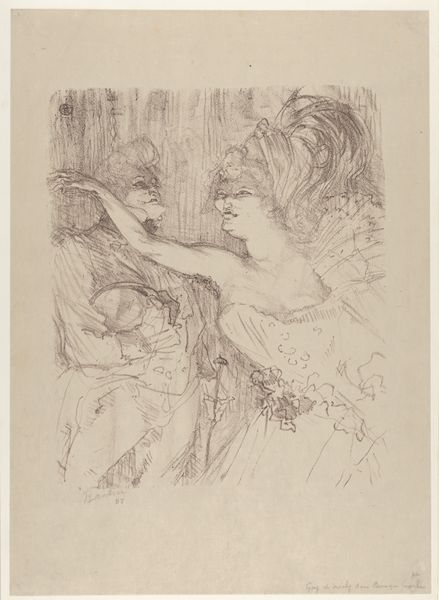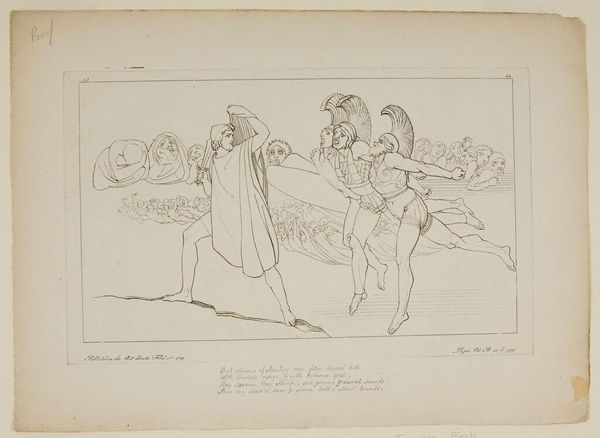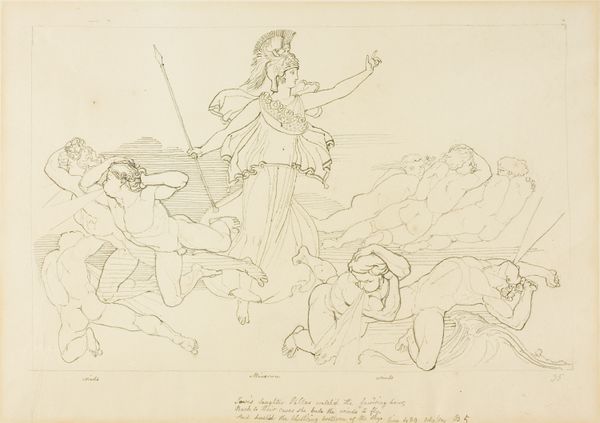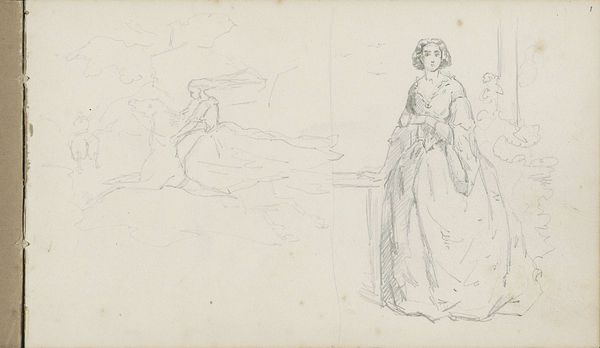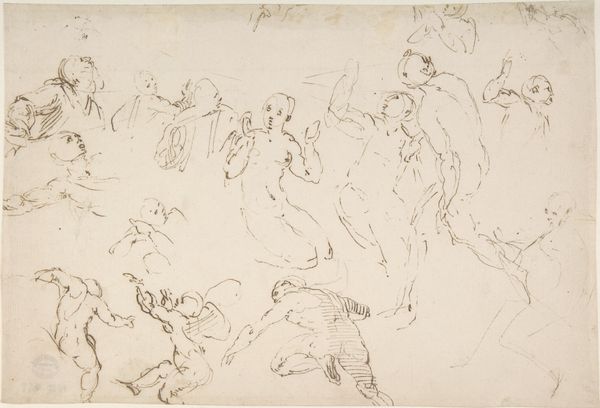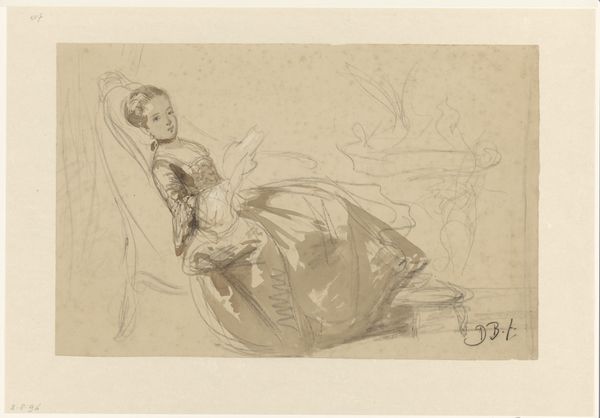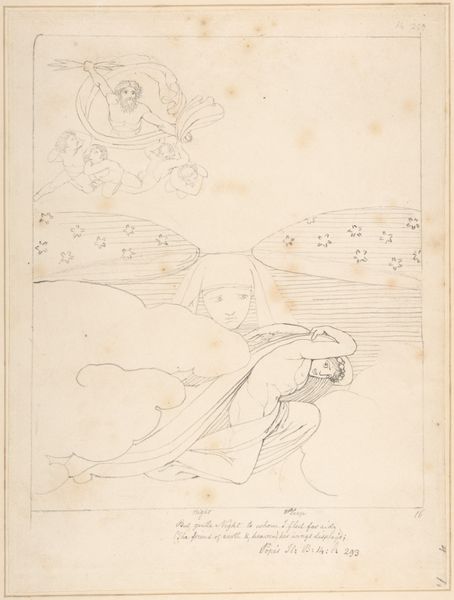
drawing, print, etching, paper, ink, graphite, pen
#
drawing
#
allegory
#
narrative-art
# print
#
etching
#
etching
#
figuration
#
paper
#
ink
#
romanticism
#
graphite
#
pen
#
history-painting
Dimensions: 215 × 282 mm
Copyright: Public Domain
Curator: Today we’re observing “The Harpies and the Daughters of Pandarus," an ink and graphite work on paper by John Flaxman. Editor: The sketch-like quality immediately gives me a sense of fragility, a precarious moment captured in light strokes. There is an underlying melancholic mood at play here, I think. Curator: Flaxman’s severe, almost Neoclassical lines contrast starkly with such an interpretation. Observe how the composition relies on balanced symmetry, a calculated arrangement between the figures and the creatures. This aesthetic pursuit dominates the affect. Editor: But shouldn’t we consider Flaxman's involvement in abolitionism and other social justice movements? This work may depict helplessness in the face of violent disruption—the harpies abducting the daughters becomes a metaphor for exploitation of women and colonial violence. The daughters, vulnerable and clinging to one another. Curator: An interesting reading, but I believe it strays from what is presented. Surely, the focus here lies more on the execution. The almost sculptural rendering of the drapery, for instance, adds substantial volume, giving the daughters—who might otherwise seem ethereal— a tangible presence. The bodies form a clear pyramidal shape. Editor: Yet Flaxman was deeply engaged in the social issues of his time. I can't overlook the potential critique embedded here of the helplessness that women often experience within patriarchal systems. It is relevant, isn’t it, that Pandarus broke a truce in the Trojan War, therefore condemning his daughters to such vulnerability? Curator: While the narrative provides context, reducing the art to a simple socio-political statement seems…reductive. Flaxman’s mastery truly resides in his linear style. Editor: Perhaps. Still, understanding the intersections of gender, power, and mythology adds a critical dimension that Flaxman, as an artist living in a revolutionary time, would surely have considered. Curator: I see your point, however, my lasting thought is about the line and form relationship, truly outstanding! Editor: Agreed. A powerful convergence of form and, maybe, a message!
Comments
No comments
Be the first to comment and join the conversation on the ultimate creative platform.
